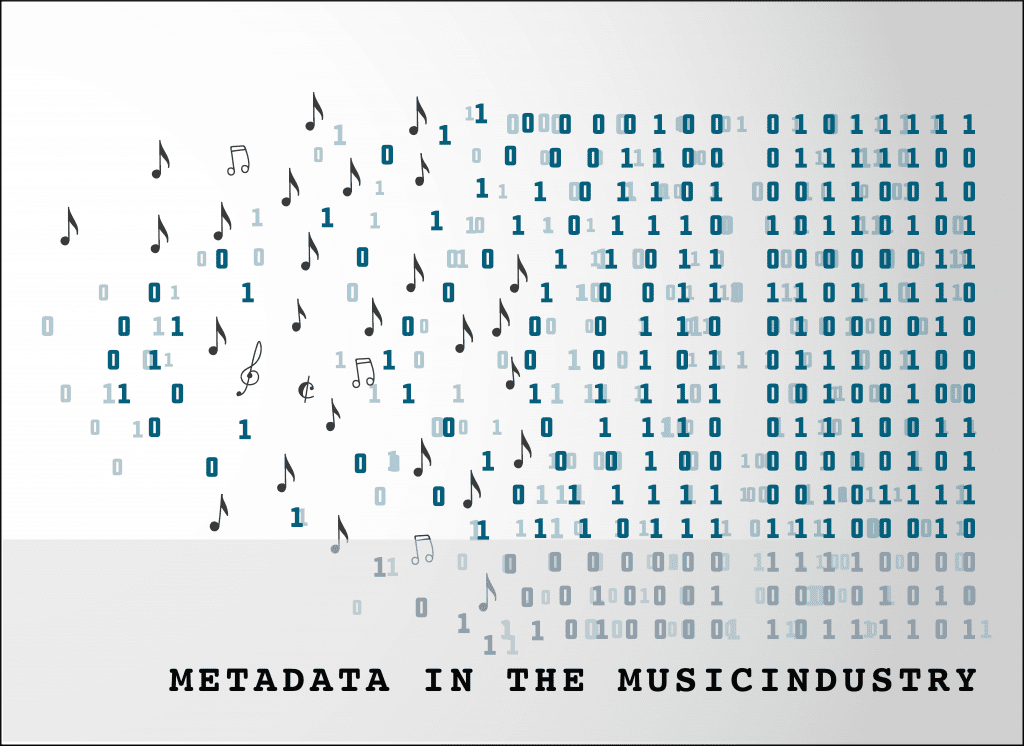Metadata in music is quite a hidden topic. Hard to detect but, oh! so important. Plus, it’s a long hold music industry issue.
After many years of neglect, it now bubbles up. The reason for that is music streaming. As well as the enormous data flows it has generated. Data Management is one of those unsung heroes of the music industry.
In historical terms, you could only enjoy music live. Well, until mechanical and self-playing pianos became popular.
They played music on their own. Following a stamped sheet of music. The consequences of this were deeper than it might look at first glance.
Wait! What have mechanical pianos to do with metadata nowadays, you ask? Fear not, I hear you.
Historical developments have huge implications on what we do today. That is because the music industry has been around a while. Let’s take a trip down memory lane to get to the bottom of the problem.
Back to the damn player piano. They made music copyright just a bit more complicated. The Berne Convention of 1886 firstly put down regulations for the copyright for compositions of music.
Musical composition, the act of conceiving a piece of music, the art of creating music, or the finished product.
source
The player piano let the composers call for a new addition to the copyright. The mechanical license. The argument was that the mechanism of the player piano was an infringement of copyright law.
Successful lobbying of songwriters in the US Congress resulted in the Copyright Act of 1909.
Differentiating between mechanical copyright and composition copyright
From now on, a ‘song’ has two components of rights within it. To keep it very simple: on one hand side, you have the composition in itself. On the other hand, you have the recording of this composition.
Two distinct areas appear. The publishers take care of the rights to the composition. Parallel the record labels look after the recording rights.
Those distinct rights are very important to get right with respect to digital streaming. The different rights that are intertwined within a song generate different royalty payouts. All this should be documented by the metadata.

The invention of the vinyl record and CD didn’t really change anything on the matter of metadata.
Even the CD had still some of the analogue properties. For example, the credits to the music are printed on the artwork sleeve.
That makes it very easy to comprehend who has a share in the composition for example. Or who the producer of the album is.
Everything changed with the advent of digital music files. Nobody took a moment to make sure that MP3’s displayed music credits.
Here, the music industry missed a pivotal moment. Making sure that there are international standards for metadata. In addition, providing technical solutions for including the metadata within the files.
Possible obstacles could have been the lack of self-governance in the industry. Back then, the separation between major and indie record labels was as strong as it is now.
What is the difference between data and metadata
Well, what the heck is the difference between data and metadata? First, both terms obviously cover the same topic.
However, the word data just describes any form of information in the smallest entity. Metadata, on the other hand, describes a set of data that describes data.
That means it gives context for individual parts of data and puts them into a bigger picture. So in this music industry setting, one piece of data could be the name of a song or the artist.
However, just that alone won’t give any context.
The role of metadata
That’s where the metadata comes in action. It combines all the small bits of information about one product.
No matter if it is a single song or a whole album. It gives a vocabulary to the legal information concerning the product.
Within the metadata, there is all the necessary information. The name of the song, name of the artist, language and so on.
Why do I need all of this?
The role of the metadata is to transport this all-important information along the digital food chain. From record label to the distributor to the digital streaming service to the end-users application.
What is more, the metadata is the ticket to royalty payouts to the right person. It identifies all people or companies who have a legal share within the (digital) product.
Without metadata, the royalty statements would look real empty. Unidentified money is transferred into a ‘black box or sandbox’ and will never be cashed out.
So, at the moment, the best bet for anyone handling metadata is to have eagle eyes on it. It is a painstaking and hideous job. But there’s no other way than checking the metadata manually. A solid implementation of data and streaming management is pivotal to making sure all data is correct.
Speakers: • Jean-Francois Bert, Founder & CEO, Transparency Rights Management (France) • Andy Doe, Consultant, Dart Music (USA) • Roberto Neri, Managing Director, Downtown Music (UK) • Malcom Ouzeri, Head of Marketing, Qobuz (France) • Christophe Waignier, Director of Strategy and Resources, SACEM (France) Moderator: • Larry Miller, Director, Music Business Program, NYU Steinhardt (USA)
What are some examples?
In the digital world, there are many different types of metadata. Technical metadata, for example, includes properties like the compression, file size or the creation date.
Within the music industry, however, there are certain ways that are most prominent.
There is objective and descriptive metadata, for example. It includes anything like the song title, the performing artist, main genre.
Descriptive metadata is used every time someone needs to query, organize, sort or present the music — whether it’s to put together an artist page on Spotify or identify and attribute a radio spin.
(Soundcharts)
But there is also subjective metadata. The recommendation metadata used by streaming platforms. With this, they generate the discovery playlists, for example.
Also, when you ask your Alexa to play a song. The algorithm then uses recommendation metadata to match your wish to the database.
The used properties here describe how something ‘sounds’. Also, what feeling it exaggerates within the listener. Most streaming platforms have their own recommendation metadata.
Pandora uses ‘The Music Genome Project®’ to identify various parameters.
Our team of trained musicologists has been listening to music across all genres and decades, including emerging artists and new releases, studying and collecting musical details on every track– 450 musical attributes altogether.
(Pandora)
Spotify, on the other hand, uses ‘The Echonest’. ‘Our music intelligence platform synthesizes billions of data points and transforms it into musical understanding…’ (The Echonest)
Music metadata standards
The digital transformation of the music industry came along without any regulations concerning metadata.
Subsequently, that has let most parts of the industry to come up with own formats. Now, metadata has to navigate a jungle of databases all over the industry. The longer the chain the more likely problems and errors will occur.
Companies like DDEX, VivaData, Exploration and TuneRegistry work on it. Their objective is to implement coherent metadata standards.
Also, databases like MusicBrainz try to collect as much standardized metadata as possible.
What’s next for metadata in music?
All those ideas are great. Undoubtedly, it is important that solutions are worked out. However, the music industry still has to agree on international standards.
At this moment in time, it is unclear when this will happen. Probably when there is a mutual understatement of the financial scale of metadata.

